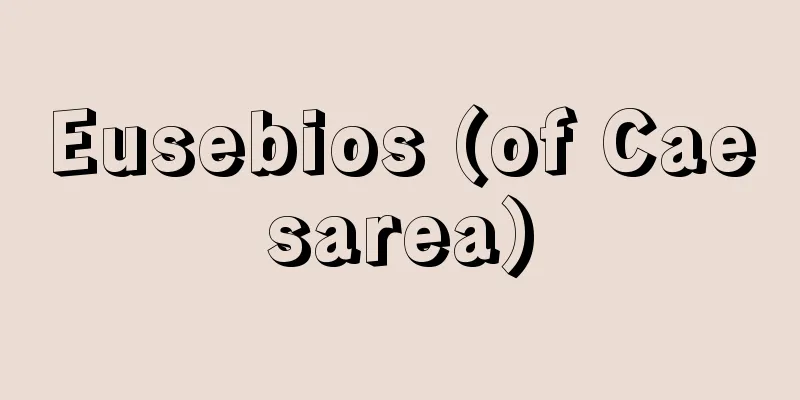Purple Robe Incident

|
This incident shows the Shogunate's policy of controlling and oppressing the Imperial Court in the early Edo period. Purple robes refer to purple robes and kesas, which were originally bestowed by the Imperial Court to monks and nuns of high virtue, regardless of sect. It was an early practice, and while it expressed their dignity, it was also a source of income for the Imperial Court. As a means of oppressing temples and monks, the Shogunate established the "Imperially Permission to Wear Purple Robes Along with the Laws of Daitoku-ji Temple, Myoshin-ji Temple, and Other Temples in Yamashiro" in 1613 (Keicho 18), and two years later, it established the "Kinchu Narai Kuge Shohatto" (Kinchu and Kuge Shohatto), which warned against the indiscriminate bestowal of purple robes and the title of Shonin. However, Emperor Gomizuno-o, as per the previous custom, granted imperial permission to wear purple robes to a dozen monks without consulting the Shogunate. When the shogunate learned of this, they deemed the lack of prior consultation a violation of the law and declared many of the imperial charters invalid, in an attempt to subjugate the imperial court and demonstrate their power. This conflict is known as the Purple Robe Imperial Charter Incident. Soho (Takuan) of Daitokuji Temple and others protested and refused to submit, and were exiled in 1629 (Kan'ei 6). This is said to be the biggest discord between the imperial court and the shogunate in the early Edo period. This was a major conflict between the imperial court and the shogunate that dealt such a serious blow to Emperor Gomizunoo that it is believed to have led him to decide to abdicate. [Shinji Ono] "The Shogunate and the Emperor" by Shinji Ono (included in "Iwanami Lectures on Japanese History: Early Modern Period 2"; 1963, Iwanami Shoten) [Reference items] | | |Source: Shogakukan Encyclopedia Nipponica About Encyclopedia Nipponica Information | Legend |
|
江戸初期、幕府の朝廷統制圧迫の政策を示す一事件。紫衣は紫色の法衣や袈裟(けさ)をいい、もともと宗派を問わず高徳の僧尼が朝廷から賜ったもので、早くから行われ、その尊さを表すと同時に朝廷にとっては収入源の一つでもあった。幕府は寺院・僧侶(そうりょ)圧迫の手段として1613年(慶長18)「勅許紫衣竝(ならび)に山城(やましろ)大徳寺、妙心寺等諸寺入院の法度(はっと)」を定め、さらに2年後には「禁中並公家諸法度(きんちゅうならびにくげしょはっと)」(禁中并公家中諸法度)を定めて紫衣や上人(しょうにん)号をやたらに授けることを戒めているが、後水尾(ごみずのお)天皇は、これまでの慣例どおり、幕府に相談なく十数人の僧侶に紫衣着用の勅許を与えてきた。これを知った幕府は、事前に勅許の相談のなかったことを法度違反とばかり多くの勅許状の無効を宣言し、朝廷をも抑えて実力を示そうとした。この紛争が紫衣勅許事件である。大徳寺の宗彭(そうほう)(沢庵(たくあん))らは抗議して服従せず、1629年(寛永6)配流の刑に処された。これは江戸初期の朝廷と幕府の不和確執の最大のものといわれる。これによって後水尾天皇に退位を決意させることになったと考えられてきたほどの深刻な打撃を与えた朝幕間の大きな対立であった。 [小野信二] 『小野信二著「幕府と天皇」(『岩波講座 日本歴史 近世2』所収・1963・岩波書店)』 [参照項目] | | |出典 小学館 日本大百科全書(ニッポニカ)日本大百科全書(ニッポニカ)について 情報 | 凡例 |
<<: JC Penney [company] - JCPenney
Recommend
Bu-qu (English spelling)
In China, the Qin and Han dynasties, both the word...
Gingoitesu - Gingoitesu
…Also read as Ginkgoaites. The name of the organ ...
Ecology - ecology
A branch of biology that deals with the lives of l...
School lunch - gakkou kyuushoku
A meal plan is a meal plan that is held collectiv...
Mudie's Library (English) Mudies Library
…Let's take an example from the United Kingdo...
Kyogen Bakama - Kyogen Bakama
...The fourth spine of the dorsal fin extends lik...
Foot keyboard - ashikenban
...The keyboard consists of these octaves stacked...
National Defense Literature
On the eve of the Second Sino-Japanese War, in res...
Fatherland Liberation Association
An anti-Japanese coalition of Koreans in Manchuria...
Administrative Procedure Act
This law was enacted to ensure fairness in adminis...
Silesian Wars - Silesian Wars
Two wars between Austria and Prussia in the mid-18...
Nohgaku
Noun: A Japanese performing art. From the Northern...
Hunchback
The spine, which is in the center of the back and ...
Carlos VI - Carlos
…Three civil wars fought in Spain in the 19th cen...
International Commercial Law
The International Trade Law (ITL) is a legal treat...









